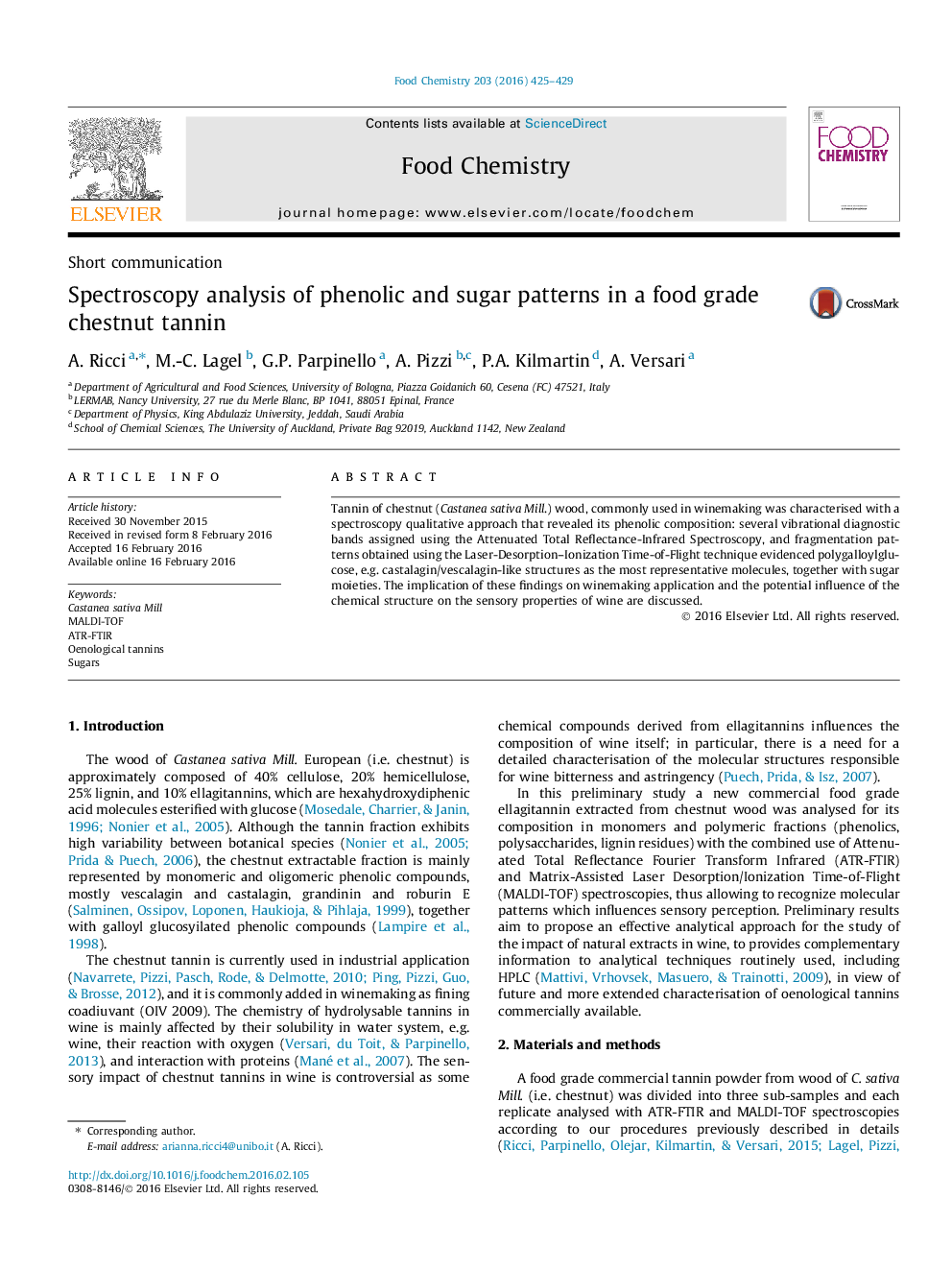| Article ID | Journal | Published Year | Pages | File Type |
|---|---|---|---|---|
| 7589603 | Food Chemistry | 2016 | 5 Pages |
Abstract
Tannin of chestnut (Castanea sativa Mill.) wood, commonly used in winemaking was characterised with a spectroscopy qualitative approach that revealed its phenolic composition: several vibrational diagnostic bands assigned using the Attenuated Total Reflectance-Infrared Spectroscopy, and fragmentation patterns obtained using the Laser-Desorption-Ionization Time-of-Flight technique evidenced polygalloylglucose, e.g. castalagin/vescalagin-like structures as the most representative molecules, together with sugar moieties. The implication of these findings on winemaking application and the potential influence of the chemical structure on the sensory properties of wine are discussed.
Related Topics
Physical Sciences and Engineering
Chemistry
Analytical Chemistry
Authors
A. Ricci, M.-C. Lagel, G.P. Parpinello, A. Pizzi, P.A. Kilmartin, A. Versari,
